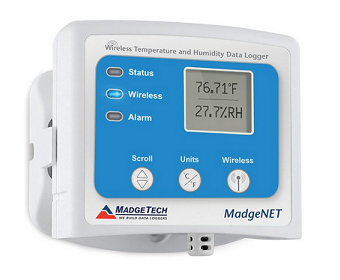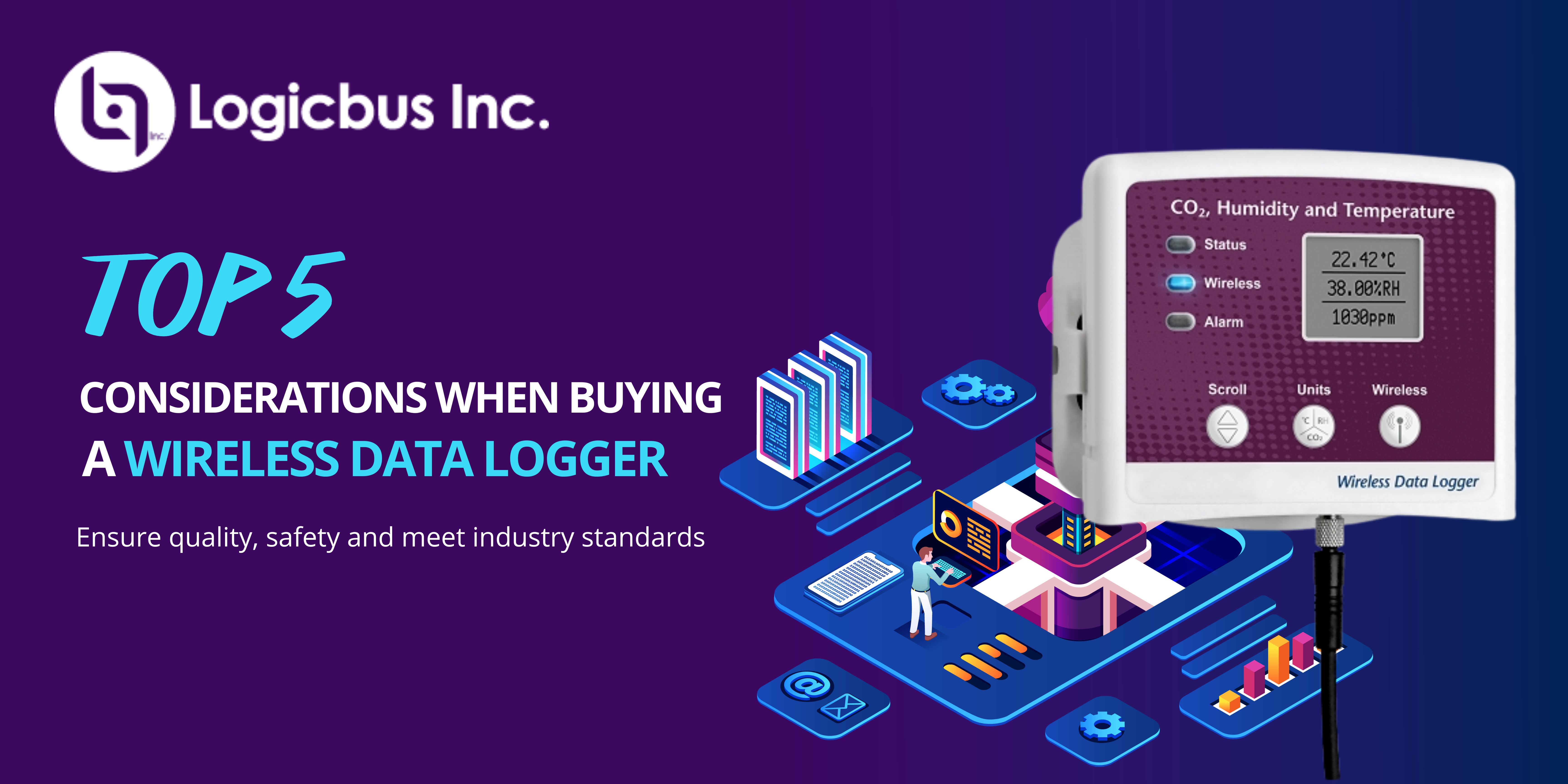Temperature control is incredibly critical for regulated industries with strict rules that must be followed to guarantee quality and safety. To comply with industry standards, many companies turn to wireless data loggers for a constant stream of real-time environmental readings for applications that involve temperature, humidity, pressure, etc. The right wireless data logger can help maintain quality and compliance by automatically generating reports for analysis, validation, and recordkeeping.
Choosing the right data logger can be overwhelming, so understanding what you need to accomplish and which functions are essential will help you narrow down your options. Here are the top 5 factors to consider when evaluating wireless data loggers for your business:
1. Application
What purpose will your wireless data logger serve? If you are just using it to monitor ambient temperature in the office, you won’t need all the bells and whistles. However, if you are working in the food processing industry where fluctuations in temperature can lead to product loss or bacterial outbreaks, you’ll want a logger that can provide continuous monitoring and alerts if out-of-range temperatures are detected.
It’s also important to factor in critical temperature limits that must be met and the environment where the data logger will be deployed. Not every logger can handle sub-zero temperatures or is durable enough to be used in industrial applications.
2. Data Access
What good is your data if you can’t access it quickly? If you only need to check readings a couple times a day, having instant or remote access to data may not be important. For users that want to take immediate action the second a deviation occurs, standalone data loggers that require a USB connection to upload readings aren’t practical. That’s why for industries where the slightest fluctuation could affect the final product, wireless data loggers are a necessity.
3. Ease of Use
Ideally, a wireless data logger should be operational within a few minutes of taking it out of the box. You don’t want to spend several hours training staff on how to properly read the logger or access data. Seek out a solution that is simple for any user to set up and operate.

4. Cost of Ownership
A wireless data logger is a critical piece of equipment for most industries, but how much will it cost you in the long run? When researching systems, pay attention to the price tag for essential features like software, data plans, accessories, and calibration. You may find that the costs of maintaining the system aren’t worth the initial investment.
5. Support
No matter the data logging system, make sure customer and technical support are available. Although some data loggers are designed for simplicity, it’s always nice to know help is just a phone call away. Whether you have a question about the software or a particular application, most companies provides a range of educational resources about their products, as well as several ways to get in contact.
MadgeTech offers a variety of wireless data loggers for monitoring conditions in real-time. Instantly access and view data on the LCD screen, through the MadgeTech 4 Software, or remotely on any internet enabled device with the MadgeTech Cloud.

Visit our website:
www.logicbus.com




sales@logicbus.com | support@logicbus.com | +1 619 616 7350 | Start conversation


